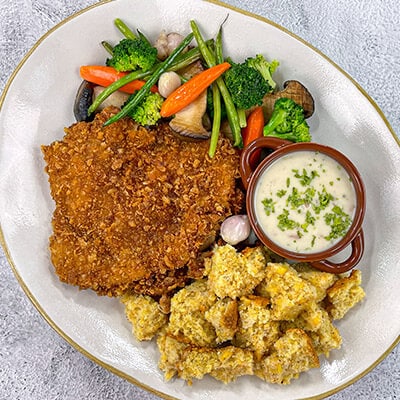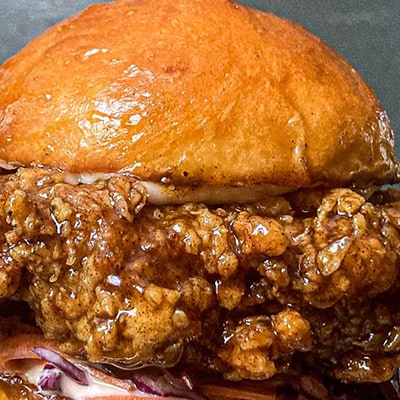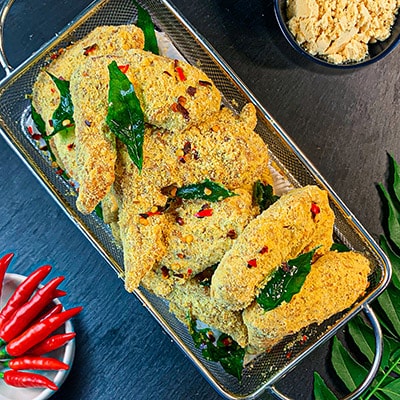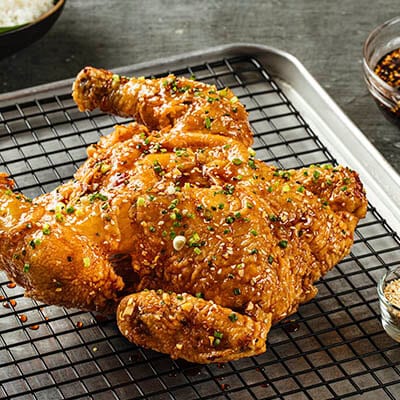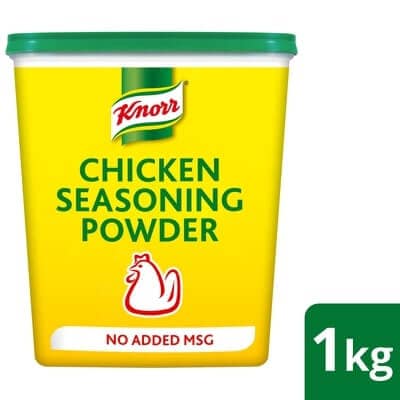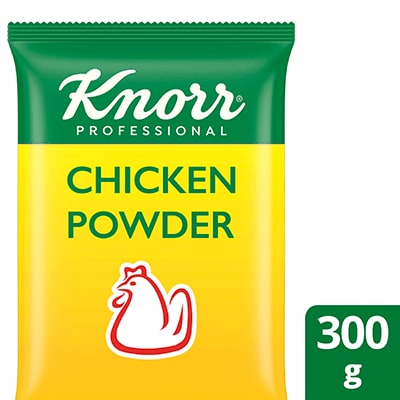You’ve done R&D multiple times and used the best cuts and ingredients, yet your fried chicken still falls short of perfection. What’s missing? You might have skipped one crucial component: chicken brine.
Brining is a culinary technique that many chefs swear by to ensure their fried chicken is consistently juicy and flavorful. All it takes is some planning, three ingredients, and a pinch of patience. Below, learn more about the brining process, uncover its benefits, and get tips for doing it right.
The Science Behind Brining
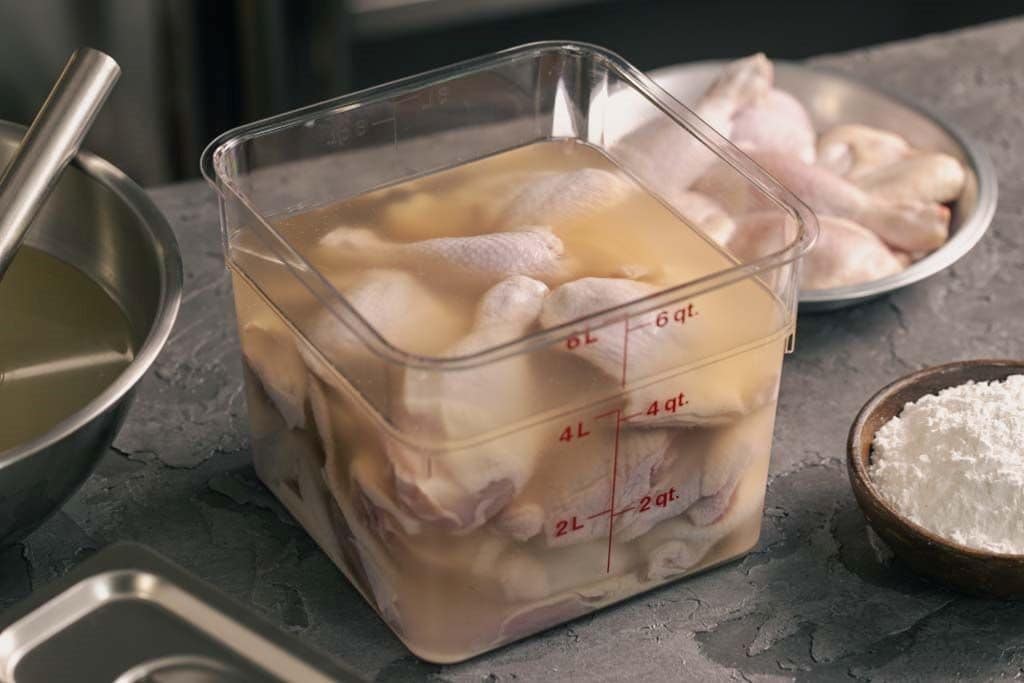
Brining prevents the meat’s muscle fibers from contracting and squeezing out moisture during the cooking process.
All types of meat, including chicken, have muscle fibers that contract when exposed to high heat. When this happens, the liquid within those fibers escape and evaporate, resulting in dry, tough meat. However, using a saline solution (i.e., a brine) can counteract this effect by increasing the moisture content in the protein.
When you immerse meat in chicken brine, the salt dissolves some of the muscle proteins, creating gaps that hasten water absorption. Additionally, the muscle fibers relax, allowing them to retain more moisture and flavor as the meat cooks. The outcome? Irresistibly juicy and flavor-packed chicken your customers won’t get enough of.
How the Brining Process Improves Your Fried Chicken

Soaking raw chicken in a mixture of salt, water, and sugar can bring out the natural umami of the meat.
Frying poultry can be a balancing act. The goal is to ensure the skin is extra crispy and the meat fully cooked yet moist. Here’s how brining helps you achieve this, guaranteeing exemplary results.
Brining provides superior flavor.
What’s the difference between brines and marinades?
Brining can add flavor to chicken more effectively and evenly than marinating. The sodium component in the brine penetrates the meat through muscle fibers, allowing the seasoning to permeate deeply. The final dish features rich, savory meatiness that goes beyond what you can achieve with a simple salt-and-pepper rub or any fancy marinade.
Using chicken brine makes the meat moist and juicy.
The primary purpose of a brine is to prevent moisture loss from the meat during the cooking process. This ensures that the fried chicken retains its juices, resulting in a moist and succulent texture.
Worried that your chicken brining recipe will make the skin soggy? There’s no need to worry. Just pat the bird dry and chill it for a couple of hours before coating or dredging.
The brining process delivers a consistent product.
Brining can adapt to various cooking methods and volume adjustments. Whether deep-frying, pan-frying, or even oven-frying large batches of chicken, the added moisture from the brine helps protect the meat from drying out. The result is perfectly cooked chicken with a tender interior and a crispy exterior every time.
The technique helps achieve a golden-brown finish.
Sugar in a brine contributes to the Maillard reaction, which enhances the dish’s flavor profile and aroma. The surface moisture of the meat mixes with salt and sugar, forming a layer that promotes browning. As you fry the chicken, this layer caramelizes into a crisp, golden coating, improving both taste and visual appeal.
Brining can help extend the meat’s shelf life.
Preserving meat by brining dates back centuries and remains effective in modern culinary practices. The high sodium concentration in the chicken brine slows down the growth and reproduction of harmful microorganisms. In turn, the meat stays fresh for a longer period, which is particularly beneficial for managing your food costs.
Try brining for yourself and taste the difference! Check out these top-notch fried chicken recipes:
Brining Frequently Asked Questions
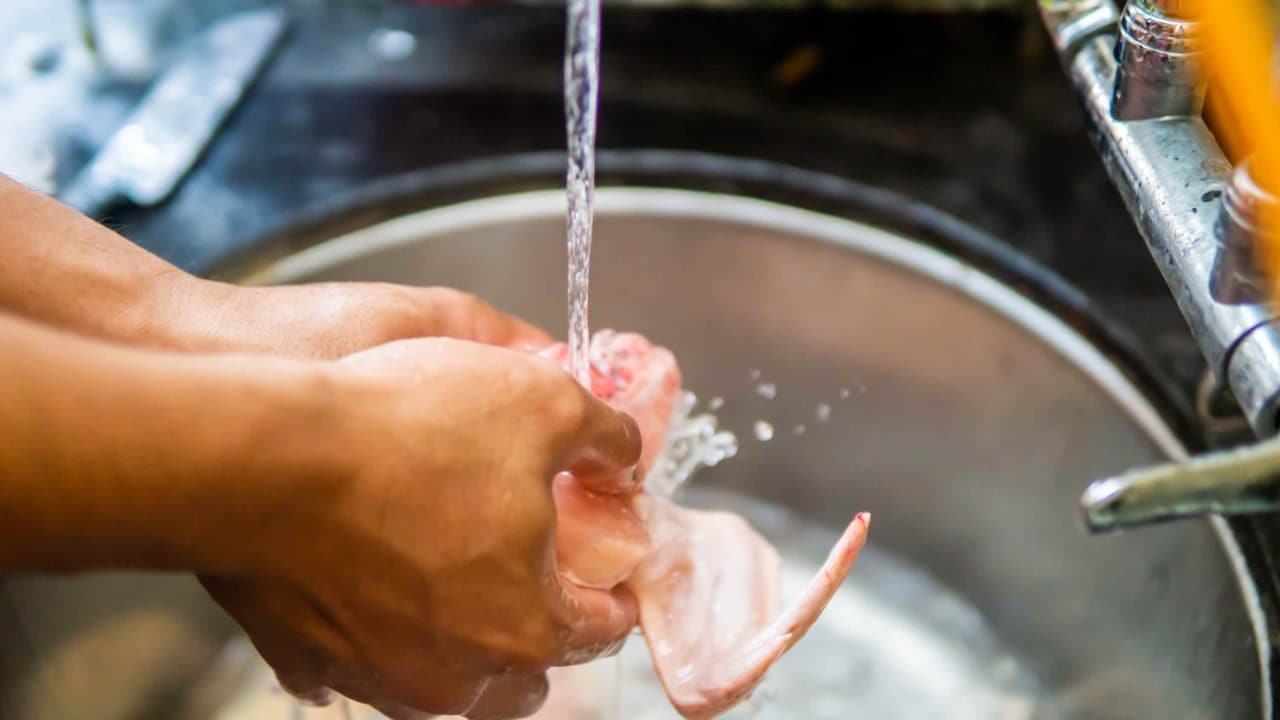
Be sure to clean the raw chicken before brining.
Planning is crucial when it comes to brining. Read the tips below to ensure the chicken in your kitchen gets the treatment it deserves.
How to brine chicken?
In its most basic form, a brine consists of salt, water, and sugar. However, you can substitute the salt with Knorr Chicken Powder for an extra umami kick. Around 88% of chefs who have tried this clever swap agree that it makes their fried chicken meatier and tastier compared to just using salt.
To make enough brine for a whole (1.2-kilo) chicken, you need:
- 70 g Knorr Chicken Powder
- 25 g sugar
- 1000 mL water
Mix all ingredients in a large pot. Heat the mixture over low flame, stirring until it comes to a boil. Once done, let the mixture cool before submerging the chicken cuts.
Why should you cool the brining solution before adding the meat?
Placing raw chicken in a hot brine can cause the surface of the meat to cook partially. This can result in an unpleasant rubbery texture on the outside while the inside remains raw after frying. Additionally, cooling your brine to below 40°C helps prevent the growth of illness-causing bacteria.
How long should you brine chicken?
Aim to brine the chicken for at least one hour. Ideally, leave it overnight. The longer the soak, the deeper the flavor penetration.
Should you rinse chicken after brining?
You don’t have to wash the chicken after brining. Doing so won’t remove the excess salt because the brine has already worked its magic. Instead, pat the bird dry with paper towels to get that crispy skin.
Can you brine frozen chicken?
You can brine and thaw your chicken simultaneously to save time. However, you might need to extend the brining period to account for the defrosting time. Depending on the size and thickness of the chicken pieces, this dual-action process can take 12 to 24 hours.
Can you leave your brining chicken anywhere?
Make sure to cover your container while your chicken is brining. Raw chicken shouldn’t touch other food items, especially ready-to-eat products. It can harbor harmful bacteria such as salmonella and campylobacter, which can cause foodborne illnesses.
A lid would prevent any juices from leaking or spilling, contaminating your refrigerator or your kitchen surfaces.
Can you reuse your brine for chicken?
It’s not advisable to use the same batch of brine more than once. Even if you’ve boiled the mixture, it may still harbor contaminants from the raw chicken. For this reason, discard any leftover brine after use – no excuses.
Can you add other flavorings to the brine?
Yes, feel free to mix in other seasonings to your prepared brine. But remember that Knorr Chicken Powder already offers a boost of umami! You can complement it with herbs and spices to create unique flavor profiles.
What happens if you brine for too long?
Over-brining can cause the meat to become too salty and mushy. That’s why you shouldn’t brine chicken for more than 24 hours.
A simple chicken brine can do wonders for your fried chicken – and your business. Master how to brine with Knorr Chicken Powder and serve perfectly juicy, flavorful dishes that will leave your guests craving more.
